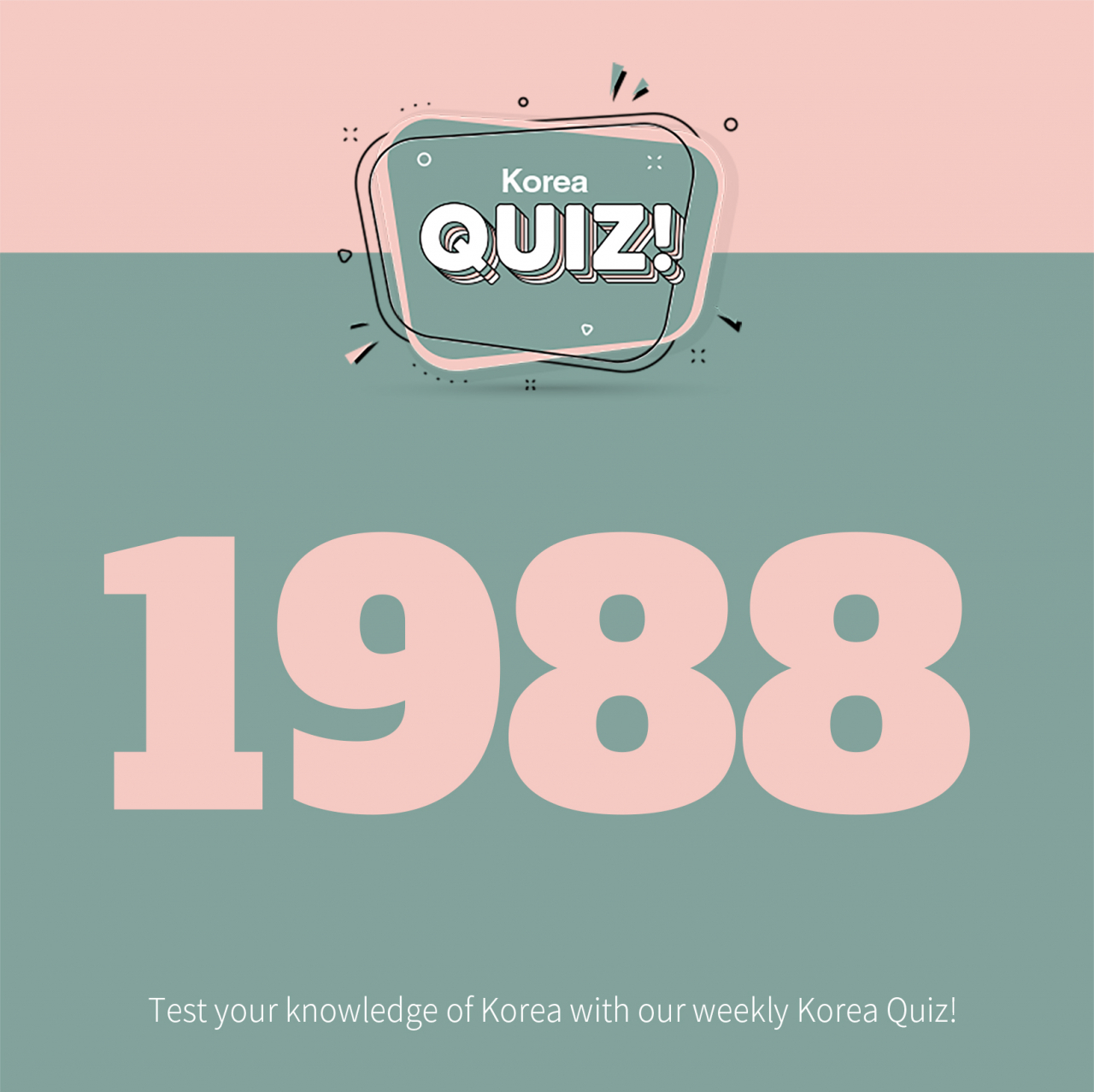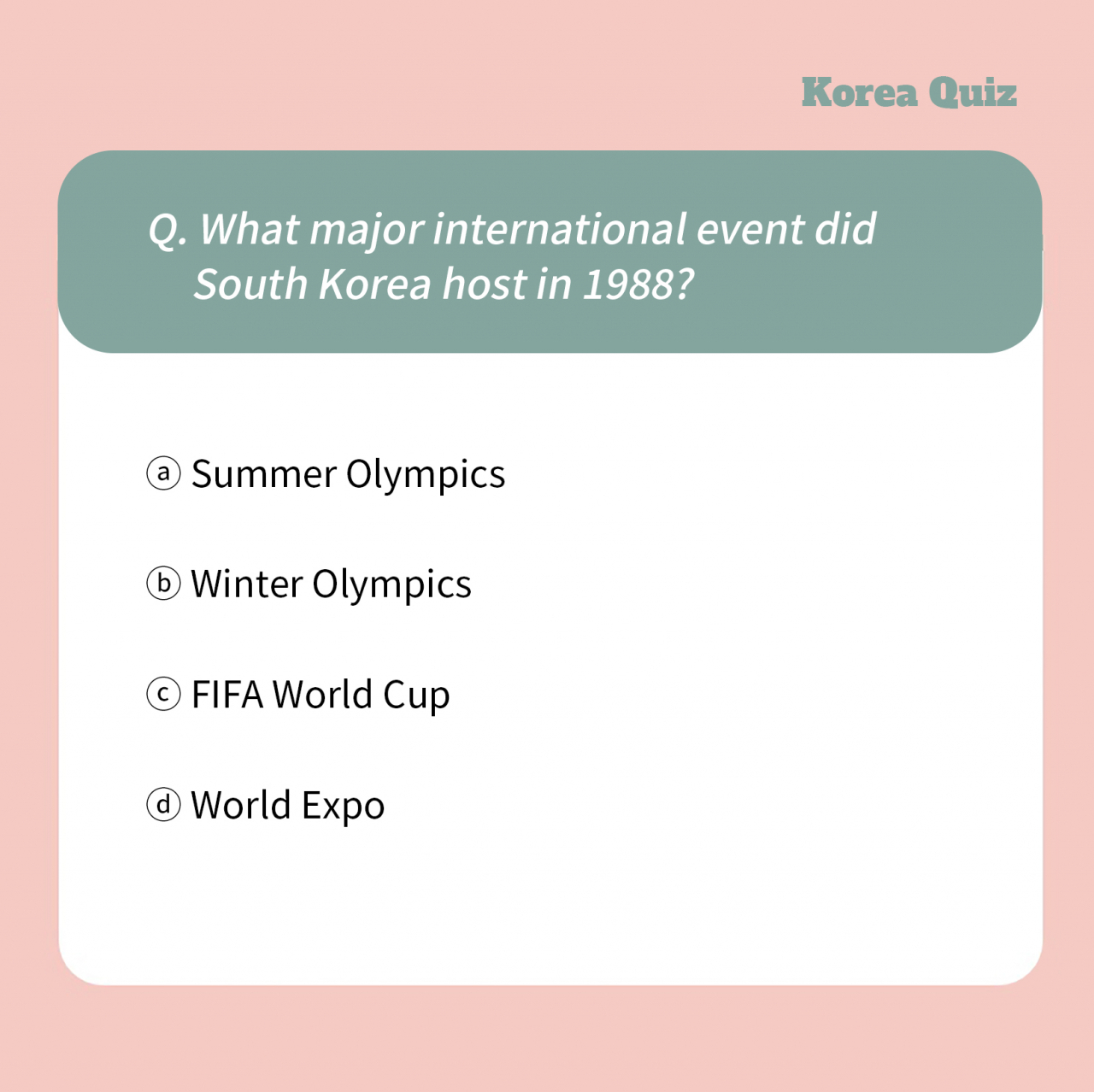

Find the answer at the bottom.
For South Koreans, 1988 was one memorable year. It is because in 1988, the nation hosted the Summer Olympics, a much-anticipated opportunity to show the world how the once impoverished nation had developed.
Although the country had hosted the Asian Games two years earlier, which provided valuable experience in managing international sports events, the 1988 Games were unmatched in terms of their grandeur.
Korea underwent years of preparations to present itself to the international community, including those that were controversial: building new sports arenas and subway lines, while also evicting poor residents and clearing neighborhoods.
Held from Sept. 17 to Oct. 2, the Seoul Olympics was the first Olympics -- summer or winter -- held in Korea.
A total of 159 nations flocked to the Olympic Stadium in Jamsil, southern Seoul, for what was then the largest Summer Games to date.
The Western and Eastern blocs, which had reciprocally boycotted the previous two Olympics — the 1980 Moscow Games and the 1984 Los Angeles Games — finally came together in one of the world’s few divided countries. However, some nations, including North Korea and Cuba, did not participate.
An orange Amur tiger named Hodori was the official mascot of the 1988 Seoul Olympics.
The name combines “Ho,” from the Korean word for tiger, and “Dori,” a common masculine diminutive in Korean. The mascot wore a traditional Korean hat, the "sangmo," with a ribbon shaped like an “S” to represent Seoul. He also wore the Olympic rings around his neck.
The country hosted the Winter Olympics in Pyeongchang in 2018, making it one of the countries to have hosted both the Summer and Winter Games.
Korea also hosted the World Expo in the southern city of Daejeon in 1993 and the FIFA World Cup, together with Japan, in 2002.
Answer: (a)




![[Herald Interview] How Gopizza got big in India](http://res.heraldm.com/phpwas/restmb_idxmake.php?idx=644&simg=/content/image/2024/11/20/20241120050057_0.jpg)


![[KH Explains] Dissecting Hyundai Motor's lobbying in US](http://res.heraldm.com/phpwas/restmb_idxmake.php?idx=644&simg=/content/image/2024/11/20/20241120050034_0.jpg)